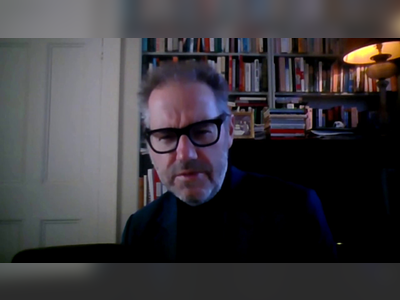Dentist Reveals the Optimal Time for Brushing Teeth in the Morning
A dentist has provided professional advice on when to perform morning teeth brushing and explained why the timing is crucial.
He also touched upon how many times a day brushing is beneficial.
When is the best time to brush your teeth in the morning? Before or after breakfast? Most people are likely to choose after, reasoning that eating would just render the whole process meaningless. However, this common belief might be mistaken, though the equation isn't that simple.
The opinion even divides the dental community, according to a professional interviewed by Fortune, Jossen Gastelum, who can be found on TikTok under @doctorjossen, who swears by brushing before breakfast.
"I believe that brushing before breakfast helps to provide a protective layer on the teeth and may even stimulate saliva production before eating," says Gastelum. He also highlights that saliva production decreases during sleep, which is why many individuals experience dry mouth upon waking up.
However, Gastelum also has advice for those who still prefer to brush after breakfast: wait at least half an hour after eating. This recommendation is important as the acids found in foods and beverages can damage tooth enamel. "It takes about 30 minutes for the saliva to neutralize the acids to a safe level in the mouth," notes Jossen Gastelum.
The American Dental Association recommends an even longer wait time, suggesting an hour after eating breakfast.
TWICE A DAY IS ENOUGH, BUT BE THOROUGH
Responding to Fortune, Gastelum made additional recommendations, such as brushing twice a day: in the morning, as discussed, and again in the evening before bed. He emphasizes the importance of both times, but particularly the evening session to remove plaque that has accumulated throughout the day.
According to the expert, becoming obsessed with brushing 3-4 times a day is unnecessary. What matters most are the thorough morning and evening brushing sessions. He advises using a soft toothbrush and holding it at a 45-degree angle relative to the gums, ensuring that the brush reaches all teeth.
When is the best time to brush your teeth in the morning? Before or after breakfast? Most people are likely to choose after, reasoning that eating would just render the whole process meaningless. However, this common belief might be mistaken, though the equation isn't that simple.
The opinion even divides the dental community, according to a professional interviewed by Fortune, Jossen Gastelum, who can be found on TikTok under @doctorjossen, who swears by brushing before breakfast.
"I believe that brushing before breakfast helps to provide a protective layer on the teeth and may even stimulate saliva production before eating," says Gastelum. He also highlights that saliva production decreases during sleep, which is why many individuals experience dry mouth upon waking up.
However, Gastelum also has advice for those who still prefer to brush after breakfast: wait at least half an hour after eating. This recommendation is important as the acids found in foods and beverages can damage tooth enamel. "It takes about 30 minutes for the saliva to neutralize the acids to a safe level in the mouth," notes Jossen Gastelum.
The American Dental Association recommends an even longer wait time, suggesting an hour after eating breakfast.
TWICE A DAY IS ENOUGH, BUT BE THOROUGH
Responding to Fortune, Gastelum made additional recommendations, such as brushing twice a day: in the morning, as discussed, and again in the evening before bed. He emphasizes the importance of both times, but particularly the evening session to remove plaque that has accumulated throughout the day.
According to the expert, becoming obsessed with brushing 3-4 times a day is unnecessary. What matters most are the thorough morning and evening brushing sessions. He advises using a soft toothbrush and holding it at a 45-degree angle relative to the gums, ensuring that the brush reaches all teeth.
AI Disclaimer: An advanced artificial intelligence (AI) system generated the content of this page on its own. This innovative technology conducts extensive research from a variety of reliable sources, performs rigorous fact-checking and verification, cleans up and balances biased or manipulated content, and presents a minimal factual summary that is just enough yet essential for you to function as an informed and educated citizen. Please keep in mind, however, that this system is an evolving technology, and as a result, the article may contain accidental inaccuracies or errors. We urge you to help us improve our site by reporting any inaccuracies you find using the "Contact Us" link at the bottom of this page. Your helpful feedback helps us improve our system and deliver more precise content. When you find an article of interest here, please look for the full and extensive coverage of this topic in traditional news sources, as they are written by professional journalists that we try to support, not replace. We appreciate your understanding and assistance.

















